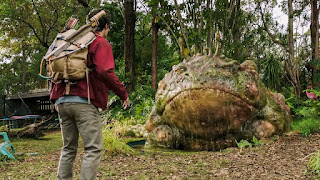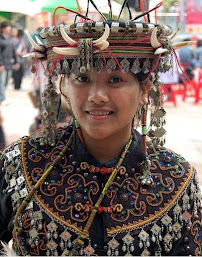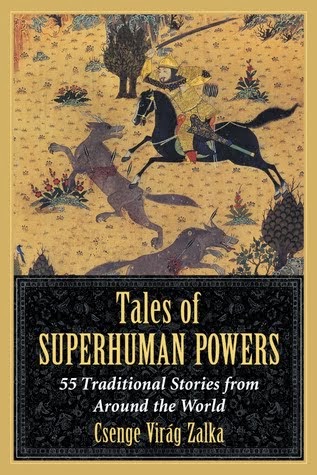As a sequel to the Following folktales around the world reading challenge, I decided to start reading minority and indigenous folktales. First up are the minority peoples who live in China. You can find previous posts here, and you can follow the challenge on Facebook here.
Butterfly Mother Miao (Hmong) Creation Epics from Guizhou, China
Mark Bender
Hackett, 2006.
This book contains five Miao creation epics, unfolding a fascinating mythical landscape.
The Miao are an ethnicity of about 12 million, out of which more than 9 million live in China as one of the 55 officially recognized minorities. They are divided into various subgroups, all with their own names. The introduction to the book gives a detailed description of Miao culture, customs and oral tradition (as well as a look at other epics from China). Since the Miao language did not have a written version until 1945, the oral tradition continued strong well into the 20th century. The texts in the book were collected in the 1950s, then, after a hiatus for political reasons, collection started again in the 1980s.
The sung epics in the book are usually performed as a collaboration between two (or two pairs of) story-singers. It's a playful contest, in which one side sings part of the epic then poses a question. The other side has to answer the question with the appropriate verses, then pose a question of their own ("And then who helped them?"; "What was the house built from?" etc.). If someone cannot answer the question, they are ridiculed for it; epic-singing is a challenge of creativity and knowledge. Singers (such as Jin Dan, one of the collectors and co-authors of the book) spend their life collecting new questions and answers, and adding them to their repertoire. In addition they also collect "song flowers", lyrical elaborations that can be used to expand and color the epic song's "bones". Sadly, only a few of these were included in the book, because otherwise the texts would have been too long.
The introduction also talks about how epics are shaped by collection, translation, and editing. None of the five epics included are usually performed this completely: the collectors gathered versions of them from various singers, and then assembled a full series of questions and verses to make a "master text" (since every singer has their own, different set of collected questions and verses). Singing one of these full texts could take up to ten days, although in reality it is not rare for singers to compete for three full days. They often go seeking competition in other towns, challenging each other in song. It is amazing how well-practiced singer pairs can perform together flawlessly, and how the two sides negotiate which epic to sing - in song. Only one of these sung negotiation "preludes" is included in the book, but it was a fascinating read.
"A sung word is worth a hundred spoken", claims the Miao wisdom. But even so, reading these epics was still an amazing experience.
(You can watch a short video about the singing tradition
here)
Highlights
Since five epics are features in the book, and all were very unique, I decided to count all of them as highlights.
The Song of Gold and Silver was about the origin of metals and the forging of heavenly bodies (the Miao are famous for their metalwork). The metals appeared as living beings who grew up, married, traveled, etc. The song begins with the old times, when Earth and Sky were stuck together, and the Sky had to be raised onto pillars to create space. The metals, born from broken rocks, were cleaned and suckled by Grandma No, gaining their unique colors. Later they all married: Silver married Borax (which is used for cleaning it), Gold married Water Chestnut, Tin married Pine Resin, Iron married Bellows, etc. Later the metals fled towards the East (the ancestral home of the Miao), hiding in water and rocks, but they were found and brought back eventually, to be used for making suns and moons. The process was described in great detail; 12 suns and 12 moons were forged, transported, and fastened to the sky. Along the way stars and many other objects and creatures were also born from extra pieces and discarded tools. In the end, since 24 heavenly bodies gave too much heat, a hero named Hsang Sa shot down 22 of them, leaving only one sun and one moon in the sky.
The Song of the Ancient Sweet Gum was also a creation myth. Here the seeds of various trees and plants lived together in a house, until the house burned down. They also fled to the East, but were brought back by the hero Xang Liang, who cultivated the land and planted the seeds. The whole epic was full of practical information about agriculture. In the end, a great old sweet gum tree was accused (falsely) of stealing fish, and cut down; all parts of the tree turned into various beings, such as Butterfly Mother from the next song.
One of the most interesting moments of the epic was about a rock that was used to make paper. Tired of continually being beaten, the rock ate up all the paper - explaining why the Miao did not have a written language for centuries.
The Song of Butterfly Mother is an epic of special importance, usually performed by experts during ancestor sacrifice rituals. Butterfly Mother, born from the Ancient Sweet Gum, grows pregnant from Water Foam, and lays twelve eggs. The eggs are hatched by the mythical Ji Wi bird (also born from the tree). One of the twelve children is Jang Vang, the ancestor of humanity, while the others include Thunder God, Water Dragon, snake, tiger, and elephant. Their umbilical cords are cut, and turn into various things: Jang Vang's into rice, the dragon's into a turtle, etc. Dragon's cord is cut with copper, which is why dragons are afraid of copper to this day. The pieces of eggs turn into clouds and other phenomena. The rest of the epic details the birth of tools and rituals needed for ancestor sacrifice.
The Great Flood is a flood epic not unlike many others around the world. It is preceded by the animosity between Jang Vang and Thunder God. Jang Vang survives in a large gourd along with his sister, whom he has to marry to repopulate the earth. The issue of sibling incest is debated in great detail. In the end, it turns out to be the wrong choice: instead of a baby, a ball of flesh is born, which Jang Vang cuts up, creating various ethnic groups. (The collectors did not publish the details, afraid to offend anyone; they only say the Han were made form the flesh, and the Miao were made from the bones.)
Westwards, Upriver is more historical legend than creation myth: it details the migration of the Miao from their ancestral home in the East to where they live now. On the way they encounter and overcome various obstacles (such as a dragon, a giant toad, and a giant eagle), although some of them are created by their own thoughtless behavior. One important character in the story is the magpie who scouts ahead to find good land, and the Ant King, who teaches the Miao how to walk in single file.
Who's next?
The Hakka people

























